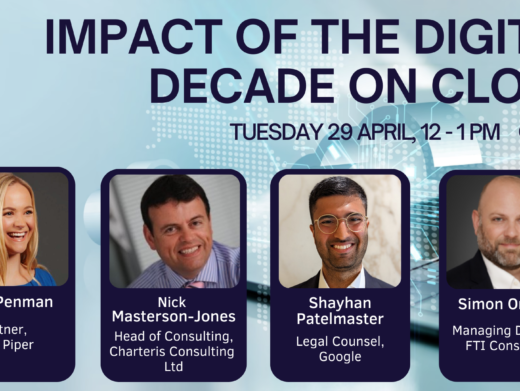Amanda Chaboryk examines how policies and organisations may need to adapt if generative AI is to be used to improve access to justice.
Introduction
The legal field has consistently faced a growing and essential demand for innovation to tackle persistent issues related to access to justice. At a high level, the primary factors that impact access to justice and hinder individuals from effectively navigating the legal system include financial constraints, legal complexity, language barriers, and a lack of legal knowledge. These barriers create significant challenges for many, making it difficult for them to understand their rights, access legal resources, and obtain fair outcomes. Addressing these issues requires a multifaceted approach that not only simplifies legal processes but also enhances public awareness and provides support for those in need. A key question on this matter, raised in Legal Tech and the Future of Civil Justice is why there is “such a large justice gap between the high volume of justice problems and the small percentage that receive legal assistance”. Research, conducted in England and Wales several years ago detailed that around a million civil justice problems go unresolved, demonstrative of legal exclusion on an enormous scale. To address these barriers effectively, it is imperative not only to simplify legal processes and enhance public awareness, but also capitalise on the opportunities presented by technology, in order to bridge this justice gap and foster a more inclusive and user-centric legal system.
Technology’s Role and Challenges in Enhancing Legal Service Accessibility
Concerted efforts have focused on using technology to enhance legal service accessibility, but it is by no means a standalone solution for facilitating access to justice, as technology adoption also presents its own unique challenges. For instance, the digital divide can limit access for those without reliable internet or digital literacy. To tackle these challenges and ensure the effective use of technology in enhancing legal service accessibility, it is vital to adopt an agile and adaptive innovation strategy that is user-focused and comprised of a range of different subject matter experts, both legal and technical. The success of solutions will also need to have safeguards in place to facilitate system coordination, data management, and bespoke technology risk frameworks. As technology continues to evolve and shape access to justice, it is essential to recognise that the definition of access itself varies significantly depending on individual circumstances and specific legal needs.
Barriers to Access
Access to justice varies widely based on individual circumstances, encompassing understanding legal processes, affording representation, and knowing one’s rights. Vulnerable groups, including low-income individuals and non-native speakers, face extra barriers such as limited financial resources, lack of awareness, interpreting intricate legal systems, and language barriers. Ensuring equitable access requires targeted interventions like multilingual legal resources and community outreach programs. Understanding these barriers is essential to grasp the broader concept of access to justice and its intrinsic link to the rule of law. This raises the crucial question of how to define access to justice, which is closely tied to the rule of law. Access to justice is defined in a House of Commons Library Debate Pack (by Jack Simon Caird, Jacqueline Beard, and Grahame Allen) as the right of individuals to have effective access to the courts and legal processes to resolve disputes. Their pack also further elaborates to ensure that people can seek and obtain a remedy through formal or informal institutions of justice for grievances in compliance with human rights standards. The connection between access to justice and the rule of law is crucial because it allows individuals to protect their rights and ensure that others are held responsible according to the law.
Evidence-Based Findings on Access to Justice
An important study providing evidence-based findings on access to justice is the Legal Needs of Individuals in England and Wales report, which offers comprehensive data on legal issues, highlights significant barriers to accessing justice, and supports policy reforms aimed at improving legal support and outcomes for individuals. The report also helpfully defines access to justice as the ability of individuals to engage with the legal system effectively, ensuring they understand their rights, responsibilities and available remedies. The most recent survey (2023) reveals that two-thirds of adults in England and Wales have faced legal issues in the past four years, with employment, finance, welfare, and benefits being the most common. Despite this, only 62% received ‘some form of help’, emphasising significant barriers to accessing legal support. These reports highlight that the main barriers to access to justice are high costs, low legal confidence, and a lack of awareness about eligibility for legal aid. Access to justice requires understanding the legal process, having the confidence to engage with it, and accessing the necessary resources to navigate the system. Recognising these critical needs is essential for developing innovative solutions to effectively address these challenges. However, innovation’s role in facilitating access to justice is not solely about new technology; it also involves rethinking and redesigning processes, services, and technological delivery. As technology evolves and adapts, organisations must do the same, focusing on bespoke solutions tailored to individuals’ unique legal needs. For technology to have the maximum impact in facilitating access to justice, it must be designed with the user in mind. This means simplifying the legal process for individuals and supporting them in understanding their legal rights and how to access them.
Before discussing how emerging technologies can improve access to justice, it’s essential to identify barriers to their adoption in the legal sector. The Technology, Access to Justice, and the Rule of Law report highlights obstacles such as confusion around current technologies, unequal resources, digital and legal literacy challenges, insufficient funding, and regulatory concerns. Digital and data literacy are crucial for AI literacy, as understanding a technology’s infrastructure is vital for effective use. Digital literacy provides the tools and platforms, while data literacy offers the analytical skills needed to make sense of the information processed by AI systems. Together, these literacies enable individuals to not only use AI technologies but also to understand their underlying mechanisms, limitations, and potential biases.
AI Literacy and Legislative Requirements
The importance of AI literacy has even been recognised in legislation. The long-awaited EU Artificial Intelligence (AI) Act emphasises that AI system providers and deployers must ensure their staff have adequate AI literacy. Specifically, Article 4 of the Act states that providers and deployers of AI systems should take measures to ensure a sufficient level of AI literacy among their staff and other personnel dealing with the operation and use of AI systems on their behalf. With data and AI literacy now legislated, user training and understanding are more critical than ever. AI education must be catered for, inclusive, and accessible, considering diverse backgrounds and expertise to ensure effective use of AI technologies.
User-Centric Technology Solutions in Legal Services
Various legal service providers have successfully overcome barriers by focusing their technology solutions on user needs. Examples include mobile apps, user-friendly case management systems, and chatbots. Access Social Care, a charity offering free legal advice for social care needs, exemplifies this with their AI-driven chatbot, AccessAva. Available 24/7, AccessAva provides personalised legal information, guidance, and pre-written letters to help resolve social care issues. By learning from user interactions, AccessAva ensures a human-centred approach, showcasing AI’s potential to simplify complex social care challenges and enhance access to justice. Applications like AccessAva demonstrate significant potential for AI to provide faster and more accessible support in navigating these issues, thereby furthering access to justice. Chatbots can serve as a helpful aid for individuals by providing personalised legal information and guidance on various issues, such as employment disputes, financial matters, and welfare eligibility. They can also direct users to further supportive resources, ensuring timely and accurate assistance to enhance access to justice. Within the UK public sector, there are a growing number of initiatives that have used technology to enhance legal service accessibility.
Transitioning to the public sector, the Ministry of Justice’s Digital Strategy 2025 exemplifies how technology can enhance public sector services. This strategy outlines key initiatives to modernise and improve efficiency. One major initiative is the development of digital prison services to replace outdated systems and support rehabilitation. By standardising processes and ensuring timely data availability, these services aim to improve risk assessment and management, enhancing the experiences of both staff and inmates. Another focus is simplifying access to legal aid services. By implementing recommendations from the Criminal Legal Aid Independent Review (CLAIR) and automating processes, the Ministry aims to streamline legal aid applications, making it easier for applicants and providers. This approach reduces risks and costs while significantly improving user experience. The strategy illustrates how the strategic implementation of technology can lead to more efficient, dependable, and user-friendly services within the public sector. Building on the advancements in legal service accessibility, generative AI can further revolutionise the public sector by enhancing the reach and personalisation of legal assistance solutions.
Traditional AI to Generative
Traditional AI systems are designed to perform specific tasks, such as document review, by following predefined rules and algorithms. These systems excel at automating repetitive and structured tasks, significantly improving efficiency and accuracy in areas like data analysis, information retrieval, and decision-making. Traditional AI has been pivotal in enhancing access to justice through user-friendly solutions like mobile apps, case management systems, and chatbots such as AccessAva, which provide personalised legal information and guidance.
Generative AI, however, takes this a step further by enabling more sophisticated, personalised, and scalable legal assistance. This advanced technology can significantly expand the reach and impact of legal services, offering transformative opportunities for the future of access to justice.
Generative AI shows immense promise in transforming access to justice by addressing common challenges people face when navigating the legal system. This advanced technology generates new content, such as text, images, or legal documents, by learning from extensive datasets. Utilising sophisticated algorithms, generative AI produces outputs that closely mimic human work, enabling more dynamic and personalised interactions. One of the most compelling applications of generative AI in the legal field is its ability to offer customised legal advice based on user queries. This capability is rooted in the technology’s advanced natural language processing (NLP) algorithms, which allow it to understand and interpret the nuances of human language. When a user inputs a legal question or describes a specific legal issue, the AI can analyse the query in real-time, drawing from a vast repository of legal knowledge and precedents to generate a tailored response.
Enhancing Legal Assistance in Employment Disputes
For example, if an individual is facing an employment dispute, they can input details about their situation into the AI system. The AI can then analyse the specifics of their case, compare it with relevant legal precedents and regulations, and generate a tailored response that outlines potential legal options, rights, and next steps.
As identified in the 2023 Legal Needs Survey, the most commonly experienced legal issues related to employment, welfare, and benefits. The Law Gazette recently reported that the employment tribunal’s open caseload reached 37,000 single claims by June, an 18% annual rise. Given the increasing complexity and volume of employment-related legal issues, the role of generative AI in providing legal assistance becomes even more crucial. Gen AI can provide specific advice on their rights, potential courses of action, and even draft initial legal documents such as complaint letters or responses to employer communications. This level of personalisation ensures that the advice is not only relevant but also actionable, empowering users to take informed steps in their legal matters. Moreover, generative AI can adapt its responses based on the user’s follow-up questions, creating a dynamic and interactive conversational experience. This allows users to receive tailored advice and information in real-time, making the process more engaging and responsive to their specific needs. This dynamic interaction is particularly beneficial for individuals who may not have easy access to legal professionals due to geographic, financial, or other barriers. By providing immediate, context-specific advice, generative AI can help demystify complex legal issues and make preliminary legal assistance more accessible to a broader audience.
Generative AI: Simplifying Legal Complexities and Enhancing Accessibility
As generative AI (GenAI) evolves, its potential to simplify legal complexities and enhance accessibility becomes increasingly evident. At its core are large language models (LLMs) that generate human-like text by identifying patterns within vast datasets. Fine-tuning these models involves refining a pre-trained model on a specific dataset to enhance its performance and relevance for particular tasks or domains. This process allows them to offer personalised, easy-to-understand legal explanations. For instance, a fine-tuned employment law model can provide clear guidance on employee rights, employer obligations, workplace discrimination, and termination procedures. This makes legal information accessible to individuals with limited legal knowledge or language barriers. By breaking down complex legal jargon into digestible information, GenAI improves the efficiency and accuracy of legal processes, saving time and reducing costs for both clients and legal professionals. Additionally, these models can streamline the intake process at legal centres, allowing professionals to focus on more complex issues and triage cases more effectively, ultimately enhancing resource optimisation and client education.
Leveraging the capabilities of fine-tuned models can significantly advance the development of integrated legal decision support systems. These systems combine generative AI with other advanced tools to enhance legal decision-making and service delivery. While legal decision support systems and AI agents are related, they are distinct concepts, each playing a crucial role in modernising legal services.
Legal Decision Support Systems (LDSS) and AI Agents are advanced tools designed to enhance the efficiency and accuracy of legal professionals, ultimately improving access to justice. LDSS incorporate AI technologies such as generative AI for drafting documents, text retrieval for legal text searches, and hyperlinking for connecting related documents, ensuring comprehensive consideration of statutory provisions and case laws. These systems are particularly useful for legal advice services and local councils with limited resources, optimising their operations and allowing them to serve more clients effectively. AI Agents, equipped with strong reasoning skills, memory capabilities, and planning modules, solve complex problems and perform various tasks efficiently. By automating routine tasks and enabling thorough legal analysis, LDSS and AI Agents ensure faster, more accurate, and fair legal outcomes. This can lead to better resource utilisation, comprehensive legal analysis, and innovative problem-solving, ultimately broadening access to justice and improving the quality of legal services provided.
Conclusion
In summary, while generative AI’s ability to offer customised legal advice based on user queries represents a significant advancement in making legal guidance more accessible, timely, and personalised, it is crucial that all AI-generated legal advice be verified by a qualified legal professional to ensure its accuracy and compliance with current laws and regulations. While AI isn’t perfect, neither are humans, and together, this technology holds the promise to help bridge gaps in the current legal system, ensuring that more individuals can navigate their legal challenges with confidence and support.

Amanda Chaboryk is the Head of Legal Data and Systems within Operate, for PricewaterhouseCoopers (PwC) in London where she focuses on leading the operational delivery of managed legal programmes at PwC. Within her role she is also responsible for supporting clients and colleagues in navigating emerging technologies, such as GenAI.





